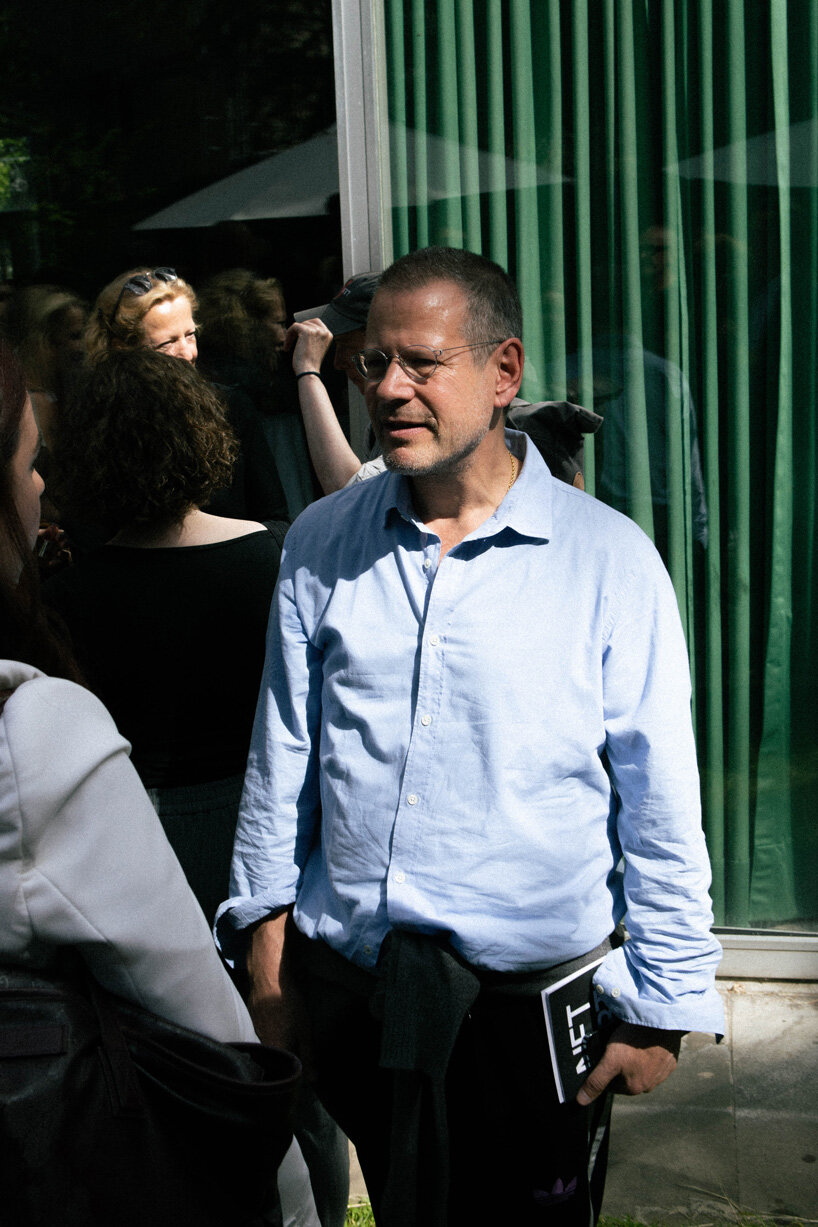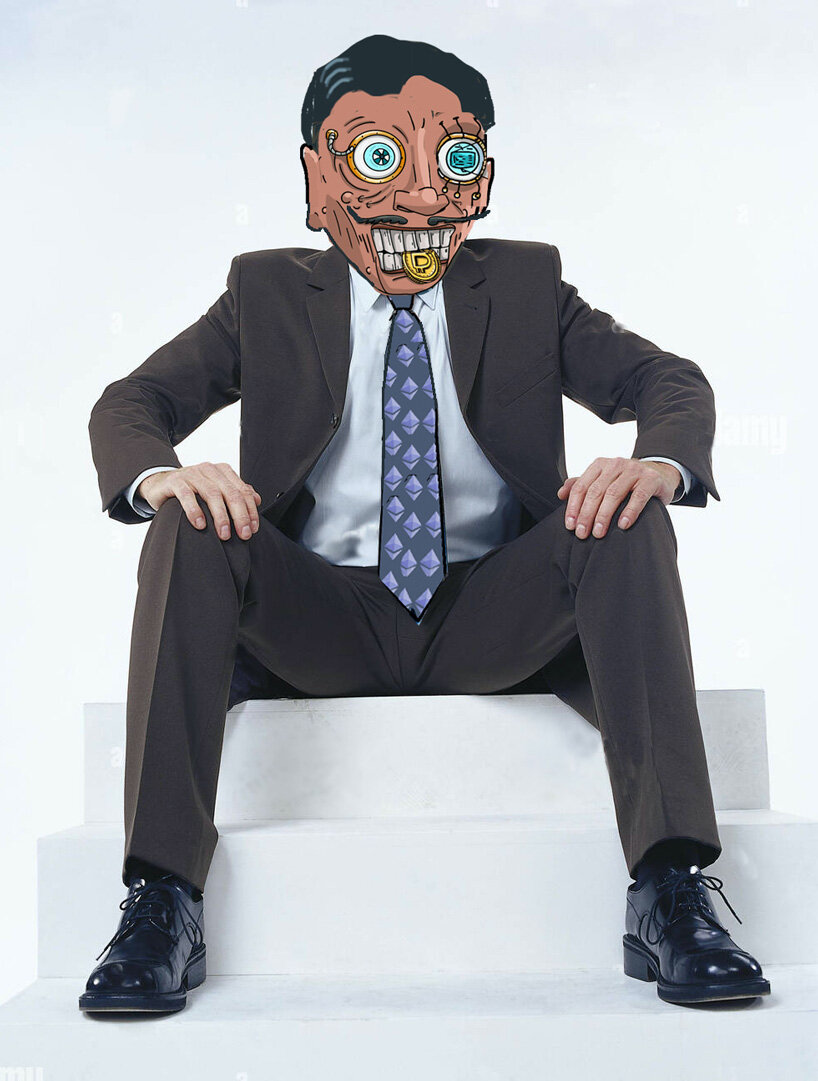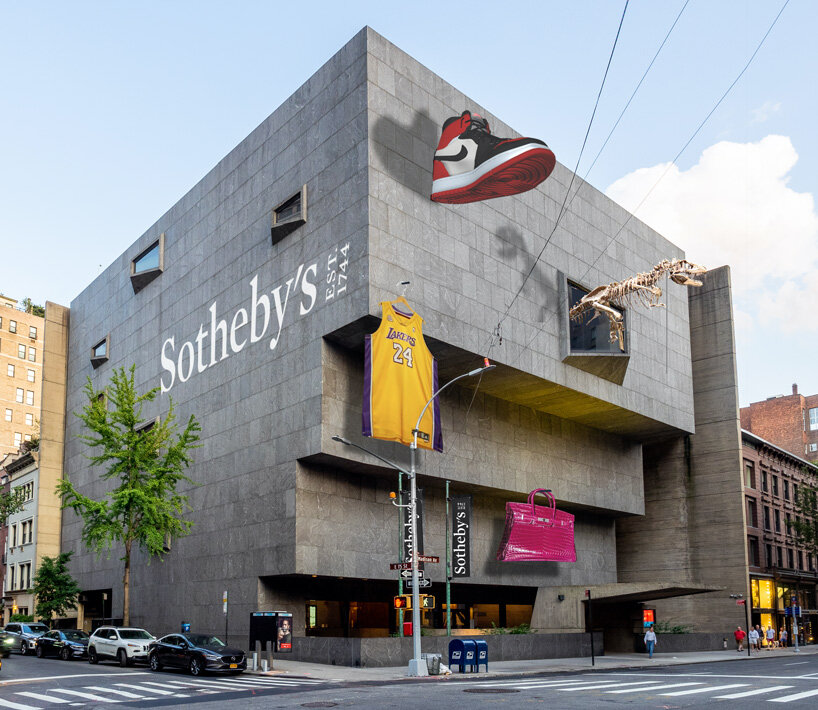kenny schachter about uniting traditional and digital art worlds ahead of NFT ART DAY ZRH
explores the role of new technologies at nft art day zrh
As the digital renaissance continues to reshape the art world, the annual NFT ART FAIR ZRH conference returns to Zurich for its second edition to delve deeper into the burgeoning world of NFTsWeb3 and modern digital art. From June 10 to 11, the platform will bring together some of the most prolific actors in the art world – from museums and directors, to collectors, critics, artists and enthusiasts – to explore the intricate intersections between art and technology through the lens of blockchain and NFT- is. Among these, artist and critic Kenny Schachter will return to lead the event’s keynote address, with an agenda to build bridges between the various camps of the traditional and digital art worlds – or militias as he playfully calls them.
As media partner of NFT ART FAIR ZRHdesignboom spoke to Schachter ahead of the event to uncover his insights on the evolving landscape of digital art, the impact of NFTs on the industry, and a deeper look at his recently launched art game POP PRINCIPLE. Read the full interview below, and keep up to date with more news and interviews from the conference here.

Kenny Schachter at NFT ART DAY ZRH 2022 | photo by KONXHELI STUDIO
interview with Kenny Schachter
designboom (DB): Can you give us an overview of the main themes that your keynote speech at the upcoming NFT Art Day will touch on?
Kenny Schachter (KS): I always try to present a snapshot of what the issues are, and what I predict how things will happen in the near future. There is very much a big schism between the traditional world and the crypto art world, whether you call it NFT art or blockchain art, or simply digital art. And I think we don’t need bridges – we need to blow up the bridges between these camps. But also, I am the bridge. I am probably among the most entrenched in the traditional art world built on NFTs and crypto art, and I speak for both constituencies.
I’m looking forward to NFT ART DAY and I’m looking to do something provocative. It’s going to be like a litmus test, a snapshot of where we are in June 2023 in terms of the confluence of these different spheres of artistic practice and how they come together. I haven’t drawn the conclusions yet, but I would like to say that NFT ART DAY is the most important gathering of these two different worlds.

Traditional Banking (Crypto looks better) | photo © Kenny Schachter
DB: From your participation last year to now, do you feel that this stigma surrounding digital technologies in the traditional art world has changed at all?
KS: It’s definitely worse. Nothing has improved at all. What is contemporary art if not a reflection of the social, economic and technological times we live in? We are in a digital renaissance, and it is all a continuum in art history. But it is this resistance that is deeply ingrained in the psyche of the traditional art world that still more than anything else in the world embraces painting on canvas. Mainly due to the fact that they are portable, easy to buy, sell and store – all reasons why you think digital art would become even more accepted. But human nature recoils from innovation, novelty and change, especially when it’s as complicated as blockchain and technology. And all this talk about the sinister nature of AI etc – the problem is not the technology. The problem is whose hands it falls into.

Pawn Hub, 2023 | photo © Kenny Schachter
DB: The NFT art game’s POP PRINCIPLE touches on these themes of disparity between traditional and digital clays. Is this what led to the development of the game?
KS: Yes. Initially, the game was supposed to be more of a battle in the traditional sense, but a non-lethal one. I did a conceptual piece that I posted on Nifty Gateway a year or so ago. And to begin with, I was going to make it an actual game. I coined this word ‘NFTism’ and later changed it to ‘post-NFTism’ because in two short years the collectible art space copied the worst features of the art world. And really the art market, it becomes this kind of huge popularity contest, where success confirms success, and people only want what has been successful in the past. The name POP PRINCIPLE is similarly a play on pop art, and also popularity, because the art market is a gigantic economic popularity contest. And people mistook popularity for value, which is a mistake.
In the game, the player represents the collector. And I think the collector who is actively engaged in the process of it all is exciting. David Bowie of all people was really inspired by when the internet in the 90s really started to develop – he said that the internet closes the gap between the artist and the audience. And this is one of the key components of Web3 and NFT.
DB: What do you aim to achieve with the POP PRINCIPLE?
KS: We have to create new bridges and I am interested in new models and new ways of collaborating and starting new conversations. In a reductive art market, whether it is the NFT market or the art market as it exists today in these demarcated zones, I am interested in promoting change and creating conversations between these different communities.
But I never really get to talk about it. In the art world, nobody wants to talk about art, all they want to talk about is where an artist is showing, how much they can auction, and where the next show is. And since I’ve been involved in the digital art world, I’ve made relationships with mathematicians, physicists, programmers, programmers – people I would never have met in my previous incarnation as solely an art world practitioner.

Duchamp’s Remorse, 1995 | photo © Kenny Schachter
DB: Despite the hostility surrounding NFTs, do you think they have had any positive impact on the art sphere?
KS: Art for me is two things: it is a means of expression and a means of communication. For me, NFTs offered the potential for a whole new model to do both. At their best, NFTs are a paradigmatic shift in what art is and what it can be, how it is made and the functionality of it, rather than just being on the wall and in a one-way relationship.
So if you own an NFT, it’s not fixed, it’s dynamic and transformative in an organic way and that’s never existed in the art medium where you can have a piece of art that’s not just a piece of art, it’s something that’s alive. That is the positive side of what art should be about – about means of engagement and communication between people.
DB: How has your own relationship with the emerging technologies of the day evolved over the decades of your career?
KS: Nothing has changed from day one! When digital videotape came out, I switched to it. As computer printing expanded in scope and materials it could be used on, I created oversized manipulated prints on vinyl designed for advertising in an art context. I exhibited my first computer animation in a show I organized myself in 1993 – mainly because no one else would undertake such an affair. So I took matters into my own hands, not so dissimilar to the way I work now. In other words, I have always enjoyed (well, it wasn’t necessarily enjoyable all the time) a life lived in art, and as we live in an age increasingly defined by technology, I have used computers and technology from the beginning of my career. In that regard, nothing has changed over more than 30 years. It’s hard for me to fathom the vitriol and opposition to crypto art and the blockchain instead of opportunistically embracing the tools at hand, as artists have done since art disappeared from the walls of caves.


